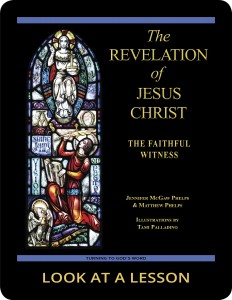Apocalypse
 What is an apocalypse? As the liturgical year winds to a close, liturgical readings focus on the final book of the New Testament, considered the great scriptural model of apocalyptic literature and sometimes called The Apocalypse. The book of Revelation gets its name following the ancient tradition of using the first word of a book of Scripture as the title for the work. In the Church today, papal encyclicals and many other magisterial documents are named in the same way.
What is an apocalypse? As the liturgical year winds to a close, liturgical readings focus on the final book of the New Testament, considered the great scriptural model of apocalyptic literature and sometimes called The Apocalypse. The book of Revelation gets its name following the ancient tradition of using the first word of a book of Scripture as the title for the work. In the Church today, papal encyclicals and many other magisterial documents are named in the same way.
In the case of the book of Revelation, that first word is ἀποκάλυψις (apokalpsis), which means “an uncovering.” Apokalpsis is the root of our English word apocalypse. As the book of Revelation progresses, it describes a vision of the end of the world. It’s quite probable that our word apocalypse has come to refer to the upheaval associated with the end of the world primarily because of the contents of the book of Revelation.
The claim of the book of Revelation as an apocalypse, however, is not that it will describe cataclysmic events at the end of the world. That point of view has been imposed upon the book by a shift in English meaning. The claim of the book is that something will be uncovered or revealed—specifically “what must happen soon,” found in the book of Revelation 1:1 (NABRE). What’s being uncovered is the future. In this sense, the book of Revelation is the only book of the Bible that claims in its entirety to be addressing things that are yet to come to pass—a fascinating claim, especially as the liturgical year comes to an end.
related topics: Apocrypha; left behind; parousia
you also may like our study of the book of Revelation
 The Revelation of Jesus Christ: The Faithful Witness, a 23-lesson Catholic Bible study with an imprimatur, examines ways in which our traditional Christian view of heaven is built on Hebrew apocalyptic visions recorded in the Old Testament. This recently revised study includes maps and additional commentary and takes a close look at the role of the prophets in present-day Christianity. Illustrations by Tami Palladino depict the often-misunderstood images in the book of Revelation. Click on the book’s cover to view a sample lesson.
The Revelation of Jesus Christ: The Faithful Witness, a 23-lesson Catholic Bible study with an imprimatur, examines ways in which our traditional Christian view of heaven is built on Hebrew apocalyptic visions recorded in the Old Testament. This recently revised study includes maps and additional commentary and takes a close look at the role of the prophets in present-day Christianity. Illustrations by Tami Palladino depict the often-misunderstood images in the book of Revelation. Click on the book’s cover to view a sample lesson.
 Click on the picture of the statue of Moses with horns (above) to learn more about Lost in Translation. A new entry is archived each Monday. Contact us to receive Lost in Translation by email every week. You may use any of the contact links on our website to ask Matthew a question.
Click on the picture of the statue of Moses with horns (above) to learn more about Lost in Translation. A new entry is archived each Monday. Contact us to receive Lost in Translation by email every week. You may use any of the contact links on our website to ask Matthew a question.
